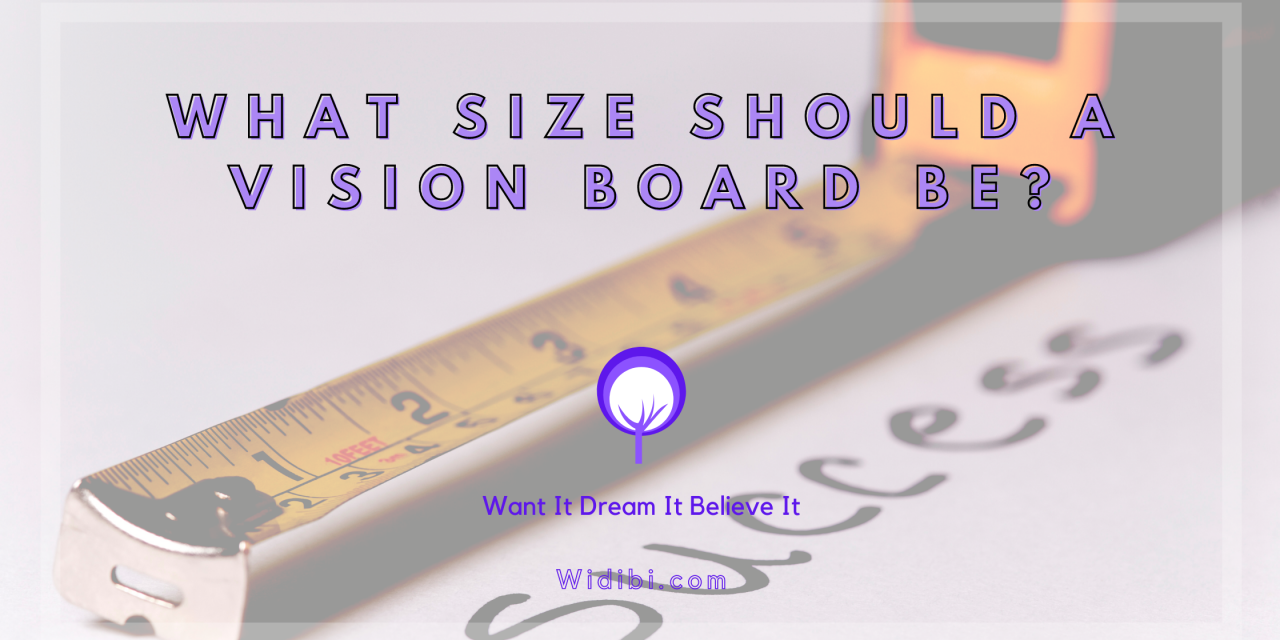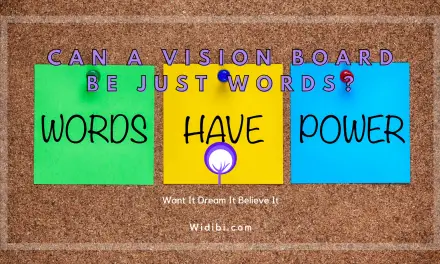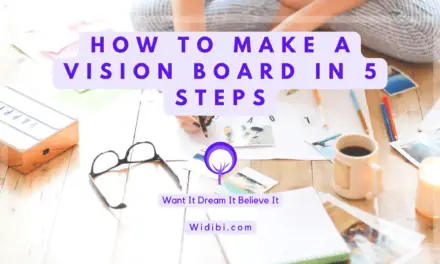Vision boards are designed to be bold, striking and within easy view when you need to focus on your goals, remind yourself of what you’re working towards or need to beat the latest bout of procrastination. That usually leads to people asking, “what size should a vision board be?” or something along those lines.
As with so many things written about vision boards, the law of attraction and everything else around the concept, the real answer is ‘it depends’. Try it out and stick with it for a while, and you’ll find that you quickly discover what works for you and what doesn’t.
However, you didn’t head over to Google or your search engine of choice to ask how big your vision board should be only to be told to go right ahead and find out for yourself. As always, I’ll instead discuss a mix of everyday thinking and personal experience. Let’s kick things right off with the former.
In This Article
The Size of a Traditional Vision Board
While you can explore everything from instant vision boards to making a vision board for someone else here at Widibi, there’s no getting away from the ‘traditional’ format. When most people that are new to the concept picture a vision board, or see one for the first time, they see the brightly coloured piece of card adorned with photos, quotes and anything else that can represent a goal.
The size of those vision boards is generally dictated by the materials available. If you want to make one from what you already have in the house, the chances are you’ll end up with something around A4 or A3 in size.
I think of A3 as being the perfect size for a first vision board. There’s enough room whereby you don’t have to prioritise your ambitions, but they’re not so big that you’ll have to work hard to find a good place to put them. So, if you’re wondering how big a vision board should be and you want to make a traditional one, A3 is a great place to start.
Can a Vision Board be the Wrong Size?
There’s not really any such thing as a vision board that’s the wrong size. However, it would help if you kept optimising the available space in mind rather than going particularly big or small.
One of the more critical elements of creating a vision board that works is ensuring that each of your goals has the opportunity to stand out. If you’re stuck for something to do or feel like you’ve lost track of what you’d like to achieve, a quick glance at your vision board should be all it takes to get you back on track. If there’s too much there, you might find yourself trying to avoid procrastination and then procrastinating more – just about something else.
It doesn’t affect size as such, but take care not to overcrowd your vision board. If you decide to create a larger board than usual, scale up your images and quotes. There are no prizes for packing too much into a large space. Clarity and consistency matter more.
What if I Run Out of Space on my Vision Board?
Regardless of the size you work with; there is always a chance that you might run out of space on your vision board. Some people have more goals and ambitions than others, and you shouldn’t have to pick and choose over which is most important to you.
Instead, once you consider your vision board as being full, move on and make another. Whether you’re using vision boards purely for setting goals, or they tie into the law of attraction for you, there’s no danger of spreading yourself and your energies too thin.
If you’ve decided to make a second vision board, it can be worth modifying the first. While there’s nothing at all wrong with multiple vision boards, it is a good idea to start breaking them down into categories. If, for example, your vision board contains several goals associated with work, and you need a second vision board to add more, consider creating a vision board specifically for that purpose. You can then position it in the best place, such as above your desk.
If, on the other hand, you have general goals that can’t easily be divided among vision boards, think a bit more deeply about which goal is most relevant and when. If a goal involves productivity, you might respond best first thing in the morning or last thing at night. In that case, make a vision board not for specific goals but particular rooms. In that case, somewhere near your bed would be ideal.
What Size Should a Vision Board Be? – In Summary
If you’ve spent quite a bit of time looking around here at Widibi, you may have noticed that not many of our writers are big on definitive answers when it comes to vision boards. I always say that whether you’re into the law of attraction or anything else, the primary power of making a vision board comes from the individual – the act of thinking about your goals, the further action of finding something to represent them and then finally the regular reminders of what you’re working towards.
So, it comes as little surprise to see that there aren’t really any right or wrong answers. A board cannot be too big or too small unless you get to the point that there’s no adequate wall space on which to hang it or you can’t make out what’s on it from a distance. I like to limit each board to around a dozen goals at most, but that’s not a hard and fast rule.
If it’s the difference between starting and not, I’ll always be in the ‘start’ camp. If the best you can do right now is a sheet of paper out of the printer, go for it. If you have brightly coloured card of any size, it’ll do for now. Failing that, if you’re reading this, you’ve got a phone, tablet or computer that will be more than sufficient for getting a vision board underway.










